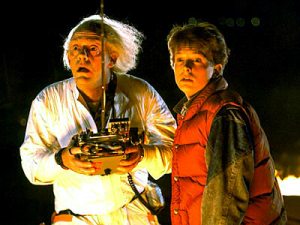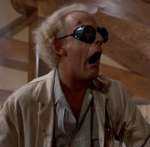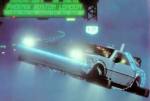Tuesday, November 24, 2009
‘Love’ and Discipleship in the Gospel of John
Here’s a question for you: Does the use of “love” in John match the use of “hate” in Luke?
That is far too broad (and probably inaccurate) a question to ask. My question is specifically about John 21:15-17, in which Jesus asks Peter three times, “Do you love me?”
As explored in my last post, in Luke 14:26 μισέω (“hate”) is used as a term of renunciation, renouncing one’s family as the foundation of security, belonging, and living and taking on Jesus as that foundation instead. In this sense, to hate my family means not that I harbor psychological hostility toward it, but that I no longer belong to/with my family, but belong to/with Jesus.
With this in mind, my question is: Since “love” is usually regarded as the opposite of “hate,” does Jesus’ question in John 17 have anything to do with the call to discipleship? Is this three-fold question of love a way of reinstating Peter as a disciple after he denied Jesus three-fold? Does “love” in this context mean the opposite of what “hate” means in Luke 14? In other words, does “love” in John 17 mean “proclamation of loyalty and belonging” while “hate” in Luke 14 means “renunciation of loyalty and belonging”?
Saturday, November 21, 2009
‘Hate’ and Following Jesus in Luke 14
This statement seems to contradict 'nicer' things said by Jesus, such as: "love your enemies, do good to those who hate you" (Luke 6:47), or "And just as you would wish that others would do to you, do so to them" (Luke 6:31).
Why this talk of hating? Μισέω is typically translated as “hate.” According to BDAG, μισέω can also mean, to "disfavor, disregard in contrast to preferential treatment" (BDAG 653 §2; cf.Matt 6:24, Lk 16:13, John 12:25, Rom 9:13). (LSJ doesn't give any sources in support of this un-preferential treatment.) In I. Howard Marshall’s opinion, μισέω “is usually said to have its Semitic sense, ‘to love less’” (Marshall, 592; cf. Gen 29:31-33, Deut 21:15-17, 2 Sam 19:7, Prov 13:24, Isa 60:15, Mal 1:2, Rom 9:13, 1 John 2:9). This is detectable in Matthew’s parallel: “He who loves father or mother more than me is not worthy of me; and he who loves a son or daughter more than me is not worthy of me; and he who does not take his cross and follow me is not worthy of me” (Matt 10:37-38).
In this way, μισέω isn’t a psychological hostility, but a renunciation, a disowning, or rejection (Marshall, 592; TDNT IV, 690). As a person chooses to follow Jesus, to become his disciple, he or she must sever the natural connections and obligations he or she has toward father, mother, spouse, children, brothers, sisters, and to renounce even himself/herself. According to Bonhoeffer, “By calling us [Jesus] has cut us off from all immediacy with the things of this world. He wants to be the centre; through him alone all things shall come to pass” (Bonhoeffer, The Cost of Discipleship, 95). Such a separation would be extremely disorienting. As Carson Brisson comments,
These words enter a cultural setting in which an individual was primarily defined, from birth through death, by her or his family. In such a milieu, this saying sounds a call for individuals and the community of faith to embrace discipleship to Jesus as their new and ultimate basis for personal and corporate identity (cf. 8:19-21). Such a call would have presented a radically impractical choice, not simply an emotionally difficult one, and a nearly impossible act in a cultural setting in which contemporary definitions of freedom as individual self-assertion and many contemporary forms of economic support outside one's family system did not exist. . . . If God’s invitation is so urgent and so absolute that an individual’s family ties no longer form the basis of her or his identity, what is left that discipleship may not require? (Brisson, Carson. Luke 14:26-27.Interpretation, 61 no 3 Jl 2007: 311)
The answer is, of course, "nothing." There is no more to give after a disciple renounces even his/her own life. To make this ominously clear, Jesus states, “Whoever does not bear his own cross and comes after me is not able to be my disciple” (Luke 14:27). Luke uses this language elsewhere, in 9:23 in which Jesus says, “If anyone would come after me, he must deny himself and take up his cross daily and follow me.”
The cross is, of course, and ultimately, a death sentence. Here, though, the cross also communicates the manner of life those who follow Jesus can expect – namely, one of shame and suffering. Just imagine, if we find it difficult today in our own time and culture to step outside the bounds of what our family members expect from us, how much more difficult would this task be within the bounds of the shame-honor culture of first-century Judea? But Jesus doesn't call us to an easy life. He calls us to a life submitted completely to him. This is why the apostles refer to themselves as δοῦλος τοῦ Ἰσοῦ Χριστοῦ, "slave of Jesus Christ." The life I live is not to be my own. In following Jesus' call, I give up my right to direct my own life. It's a total submission, an absolute resignation of self-sovereignty. If I declare that Jesus is Lord (κύριος), then that declaration has something to say about me too -- that I am his servant, his slave. Jesus becomes the anchor of our new reality. He is the mediator through whom we relate to the world and other people. No longer am "I" the lowest common denominator, but Jesus instead.
Ultimately, this order to "hate" is a declaration of where life is found. Am I so certain that there is more life to be found in my familial relations than in Jesus, or more life in wealth or in the other forms of security this world can offer? Or am I willing to let go of absolutely everything to which I previously clung to cling singularly to the one who offers life like no other can?
Saturday, November 14, 2009
Joyeux Noël and the Death of War

Since I wasn't able to attend a memorial service this year, I decided to observe Remembrance Day by watching a couple of movies that bear witness to the sacrifice and suffering of those who fought on behalf of their countries. One of these movies was Joyeux Noël. This film was particularly good at portraying the hardship and anguish of soldiers in the trenches of World War I. In this story, three generals -- German, French, and Scottish -- along with their units, are brought together by the celebration of Christmas.
In the dreary dark of Christmas Eve, a German officer who before the war had been a vocalist in Berlin, sang "Stille Nacht" (Silent Night). Close by in their own trenches, the French and the Scots listened to the hopeful song of the German singer. The Scots joined in with their bagpipes, and soon, all the soldiers left their trenches to meet one another in peace on the battle field.
There they shared stories of home and tears for loss they had already incurred thus far in battle. Many even exchanged addresses with the intent of taking up friendship again once the mess of war had ended. At the high point of this meeting, the Scottish priest led the who assembly in the Christmas midnight mas. Participating together, they were no longer enemies, but fellow men who were all here by the same unfortunate circumstances, forced into combat by the will of their homelands. This was a really striking picture of peace that can come by love in Christ -- even in the midst of war.
During the mas, the artillery fire booming in the distance reminded all that though they might forget war in the moment, the war had certainly not forgotten them. At this, they exchanged greetings of "Merry Christmas" and "good luck," and returned to their trenches.
One of the most memorable scenes is one in which the German singer-now-soldier confronts his general, asking if they must go on to kill again now that they had truly come to know those they had regarded enemies. He said, "To die tomorrow is even more absurd than to die yesterday." How foolish it would seem, having now experienced the peace of Christmas Eve, to die by the hands that offered friendship only the night before?
This war was to be the War to End All Wars. But really, going to war can't truly cause the end of war. The only thing capable of ending war, as was so grandly demonstrated in Joyeux Noël, is the peace that comes through love in Christ. Let love be the foreign policy that guides nations in their dealings with one another. Let love be the 'war' that is fought, and it really will be the War to end all others.
Thursday, November 12, 2009
New Friends
It has been another successful library book sale this year. I got there good and early this morning, and it paid off. Here are the new friends for my bookshelf (in preferential order):
- Studying the Synoptic Gospels (E. P. Sanders and Margaret Davies)
I'm excited for this one because I'm planning on taking Wes Olmstead's Seminary Gospel Seminar in May. I recently picked up a copy of Aland's Synopsis of the Four Gospels (Greek-English edition). Sanders should be a good guide. - NICNT: The Book of the Acts (F. F. Bruce)
I really like F. F. Bruce. I've been collecting his commentaries. - Jewish Literature between the Bible and the Mishnah (George W. E. Nickelsburg)
I don't know much about this stuff, but Nickelsburg sure does. So I figure this book is a good starting point. - What the Best College Teachers Do (Ken Bain)
This one was assigned during my college internship, but because of the heavy courseload I took on that year, I didn't get to read it very carefully. More of a panicked skim. It's a great resource, and now I can read it properly. - The Gospel According to St. John (B. F. Westcott)
All I know about Westcott is that he's a textual critic from a couple of scholastic generations ago. I haven't picked up any commentaries on John thus far, so, for a dollar, I figured I'd give him a try. - Comparative Philology and the Text of the Old Testament (James Barr)
This looks to be an interesting Hebrew resource. I've been reading Alan Black's Linguistics for Students of New Testament Greek, and thought Barr's book might help round out some Hebrew reading. - Biblical Hebrew Step by Step: readings from the Book of Genesis (M. Mansoor)
Hebrew still feels like a lot of work. I'm hoping this book will help to motivate me to get reading.
Good harvest. All for $15! Needless to say, I have my work cut out for me.
Thursday, November 5, 2009
Are We There Yet? Back to the Future and the year 2015
 Today is November 5th, which, according to Back to the Future, is a red-letter date in the space-time continuum (it's the day Doc invents time travel). So, I figure it's a great day to reflect on what Back to the Future held for the future.
Today is November 5th, which, according to Back to the Future, is a red-letter date in the space-time continuum (it's the day Doc invents time travel). So, I figure it's a great day to reflect on what Back to the Future held for the future.Back in the mid-80's, a wonderful trilogy of movies was filmed, which is still my favorite set to this day: Back to the Future. There are many aspects of these films that set them firmly on a preferential pedestal. The casting couldn't have been better.
 Michael J. Fox plays the part of Martin (Marty) McFly, a cool, socially-savy, slightly insecure 17 year old who knows a lot about love, but can't stand it when people call him "yellow," and learns a lot throughout the trilogy about not allowing others' opinions to dictate his life. He (somehow) befriends an old, crazy-eyed scientist, Doctor Emmett L. Brown. Their association is never explained. How does a high school student become involved in the experiments of a fringe-scientist? I'm not sure, but I love the combination. Doctor Brown,
Michael J. Fox plays the part of Martin (Marty) McFly, a cool, socially-savy, slightly insecure 17 year old who knows a lot about love, but can't stand it when people call him "yellow," and learns a lot throughout the trilogy about not allowing others' opinions to dictate his life. He (somehow) befriends an old, crazy-eyed scientist, Doctor Emmett L. Brown. Their association is never explained. How does a high school student become involved in the experiments of a fringe-scientist? I'm not sure, but I love the combination. Doctor Brown,  or "Doc," is played enjoyably by Christopher Lloyd. He's the perfect picture of a mad scientist. He offers the trilogy all the techno-babble to explain just how time travel is possible. Together Doc and Marty discover the advantages and serious consequences of time travel, as they go from their native 1985 back to 1955, forward to 2015, way back to 1885, and finally home again.
or "Doc," is played enjoyably by Christopher Lloyd. He's the perfect picture of a mad scientist. He offers the trilogy all the techno-babble to explain just how time travel is possible. Together Doc and Marty discover the advantages and serious consequences of time travel, as they go from their native 1985 back to 1955, forward to 2015, way back to 1885, and finally home again.Their travels to 2015 are of interest. When all the problems of the first movie have been resolved, Marty asks Doc where he'll go now. He tells him he'd like to go to the future "to see the progress of mankind." He says he'll go ahead "30 years. It's a nice round number." When Marty goes to the future in Back to the Future II, we get to see this progress.

To name a few of the 'advancements,' there are flying cars which travel"skyways" rather than highways, hoverboards, a controlled weather system, an efficient justice system (which has done away with lawyers), robotic waiters, automated gas stations, holographic advertising signs, video conferencing in place of the phone,
 lots of fax machines, vocal recognition, voice-activated lighting, retinal scan identification, self-drying (and automatic fitting) clothing, power-lace shoes, and hydratable foods.
lots of fax machines, vocal recognition, voice-activated lighting, retinal scan identification, self-drying (and automatic fitting) clothing, power-lace shoes, and hydratable foods. Also, the clothing fashion has become very bright, shiny, colorful, and all the young people wear their pockets inside out. (That's a young Elijah Wood to the left.)
Also, the clothing fashion has become very bright, shiny, colorful, and all the young people wear their pockets inside out. (That's a young Elijah Wood to the left.)So, are we there yet? We definitely haven't discovered an easy way to make cars fly, or to make skateboards hover. The weather is still as unpredictable as it ever has been. Though some parts of life have become more automated, such as self-serve banking and grocery shopping, or pay-at-the-pump gas stations, we are not yet served by robots. Our clothing is still very non-futuristic compared to that of Back to the Future's 2015. No self-drying, auto-sizing, or power lacing. Retinal scanning might happen in the most advanced corporations, but for now, it remains mostly in the movies. Our justice system is still not very efficient, and still full of lawyers. We do have many fast-convenience food items, though not quite like the hydrated pizza that starts the size of a quarter, and when hydrated, can feed a family of five.
On the other side of things, we've moved beyond the fax machine for the most part. Back to the Future's 2015 saw the fax machine as part of the communication of the future, with Marty's notice of job termination spitting out of almost 10 fax machines around the house. We do have such things as voice activated services, like lighting.
 Video calls are becoming more common, especially with the use of webcams. One thing the trilogy's writers did not anticipate that we do have in 2009 is the internet. The internet, as we know it now, did not exist in 1985, and is very much one of the great driving forces of our technology and convenience in this day and age.
Video calls are becoming more common, especially with the use of webcams. One thing the trilogy's writers did not anticipate that we do have in 2009 is the internet. The internet, as we know it now, did not exist in 1985, and is very much one of the great driving forces of our technology and convenience in this day and age.Overall, though, we still have a lot of ground to make up if we are to achieve the vision Back to the Future has set out for 2015. We have six years to go.